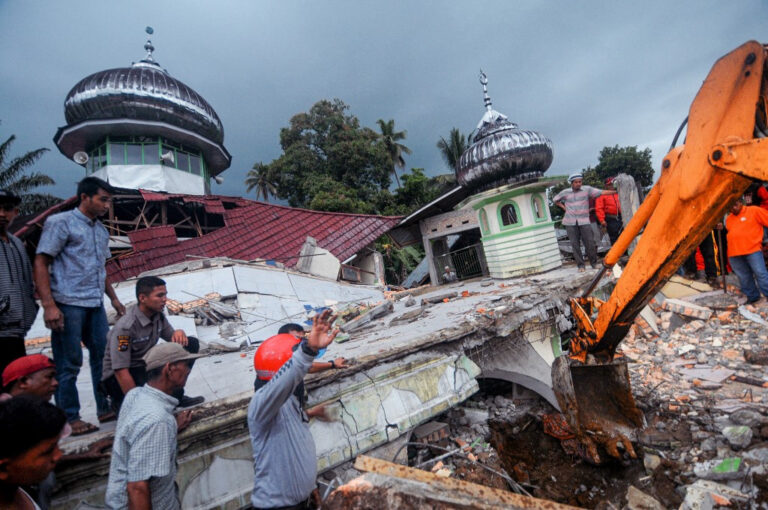here is no question about the pivotal role of submarine cables in today’s economy, especially with the pandemic-induced dependence on digital services. They are critical infrastructure for our digitally connected world, carrying over 99 percent of the world’s intercontinental electronic communications traffic.
Hence, it isn’t surprising that we are already in the midst of a global cable construction boom that is projected to reach US$8 billion by 2024, according to TeleGeography’s 2021 Submarine Cable Map and Indonesia is no exception. Earlier this year, Indosat Ooredoo Hutchison and Inligo Networks revealed plans to build a high-capacity fiber-optic telecommunication submarine cable system to increase network capacity for consumer and enterprise services across the country.
But did you know that submarine cables could potentially be leveraged to detect undersea earthquakes and tsunamis?
For years, researchers have discussed the possibility of using sensors to detect undersea earthquakes. After all, whether they happen on land or underwater, they are fundamentally caused by the same tectonic plate movements or undersea volcanic eruptions.
However, most sensors today are surface-based and shallow water-based, meaning little important environmental data from the ocean depths is collected today. To make matters worse, highly instrumented, and thus very expensive weather buoys, are subject to vandalism and/or outright theft.
Although there are existing methods that reliably collect data, they only provide snapshots of sea beds and/or are limited to a relatively small area over a fixed period of time. This means they can’t provide ongoing, constant data collection over vast distances, which is when we need to have a more accurate view of what’s going on in real-time at ocean depths around the planet.
So how exactly can submarine cables help?
There exists dedicated scientific cables equipped with environmental sensors capable of measuring temperature, pressure, and currents, among other conditions. Called Scientific Monitoring and Reliable Telecommunications (SMART) cables, or Green Cables, they collect environmental measurements to inland data centers where the measured data can then be analyzed and modelled by various scientific communities.
While useful, it’s not feasible to rely solely on SMART cables as they can only measure where they’re physically deployed, which is quite sparse today. Not to mention, there are several associated political and business challenges that make widespread rollout quite challenging.
This is where existing submarine cables come in. Around the world, there is a mesh of submarine cables that crisscross ocean floors, designed to carry data from one continent to another. As of late 2021, there are approximately 436 submarine telecom cables in service, spanning over 1.3 million kilometers and growing.
These cables use optical transmission technology to send information between endpoints, such as landing stations or inland points of presence, such as inland data centers. Coherent optical modems detect and mitigate optical transmission changes to guarantee errorless transmission, but they can also indicate changes in the surrounding environment, making them ideal for sharing critical data.
Existing data capabilities that ensure errorless coherent optical transmission can also be used to detect perturbations in the area around submarine cables to potentially detect and geolocate undersea earthquake epicenters. The more submarine cables are used, the better the coverage and geolocation accuracy.
Needless to say, this is an exciting development that could help strengthen disaster risk management in Indonesia, where more than 1,000 earthquakes with varying magnitudes occur each year. By complementing existing early warning systems, submarine cable systems may provide faster warning times to coastal communities for incoming tsunamis, all without retrofitting existing submarine cables.
Moving forward, cross-industry collaborations are critical to advance the initiative. As more submarine cable operators join this initiative, the accuracy, coverage, and geolocation precision for undersea earthquake detection can improve. It should be noted that using submarine cables to detect undersea earthquakes is meant to complement, and not replace, existing early warning detection systems.
They should work hand in hand to enhance intelligent disaster prevention and mitigation, especially for a region like Asia Pacific, where nearly 45 percent of all global natural disasters occur, according to the United Nations Population Fund’s report entitled “Delivering Supplies When Crisis Strikes”.
As the saying goes, team work makes the dream work. Given that coherent optical modems are the industry standard used on submarine cables, there is great potential to advance the altruistic activity of advanced undersea earthquake and tsunami detection.
***
The writer is senior director for solutions marketing at Ciena.


